
Pin-Up Art - I
The term Pin-Up refers to drawings, paintings, and photographs of semi-nude women and was first attested to in English in 1941. Images of pin-up girls were published in magazines and newspapers. They were also displayed on postcards, lithographs, and calendars.
A pin-up model is a model whose mass-produced pictures and photographs have wide appeal within the popular culture of a society. Pin-up models are usually glamour models, actresses, or fashion models whose pictures are intended for informal and aesthetic display, known for being pinned onto a wall. From the 1940s, pictures of pin-up girls were also known as cheesecake in the U.S.
Enoch Bolles
1883 – 1976

Enoch Bolles
(3 March 1883 – 16 March 1976) was an American painter of pin-up art. He was among the earliest and most widely circulated glamour illustrators. While known today solely as a pinup artist, Bolles was a versatile illustrator who also worked extensively in the advertising industry, creating hundreds of attractive color illustrations for products ranging from bread to cigarettes. His most widely reproduced advertising illustration is the "Windy Girl" for Zippo lighters. This work, produced in 1937, has recently been reissued as the Vargas Windy Girl and has appeared in well over 100 variations on Zippo lighters.
Bolles was born in Boardman, Marion County, Florida, the son of Enoch Bolles, Jr., a chemist in the perfume industry, and Catherine Keep. After his father's death, the family moved to Newark, New Jersey, where he met and, in 1903, married Clara Kaufman. They had eight children together, eventually settling in Harrington, New Jersey.
Bolles studied at the National Academy of Design, and his first illustrations were published in 1914 on the covers of humor magazines, such as Judge and Puck. He became best known for illustrating Film Fun. In 1923 he became the exclusive cover artist for the pulp magazine Film Fun and continued in this role until the magazine folded in 1943, a victim of the Postmaster General's campaign against 'salacious' material. In addition to his 200 covers for Film Fun, Bolles painted at least 300 more for spicy pulps, including Breezy Stories, Pep and New York Nights. None of this work was signed and most of it remains unattributed. Bolles' monthly lineup of all-American beauties precisely posed in wildly imaginative costumes did much to define the future of American pin-up illustration, and remain popular today. He was also a versatile illustrator who created advertising for many products, including Sun-Maid Raisins and Zippo lighters.
Psychological problems ended Bolles' professional career in 1943 and confined him to Greystone Park Psychiatric Hospital in New Jersey for most of the rest of his life, but he continued to paint commissioned portraits and for personal pleasure. He was eventually discharged from hospital in 1969, and died from heart failure at the age of 93.

.

.

.

.
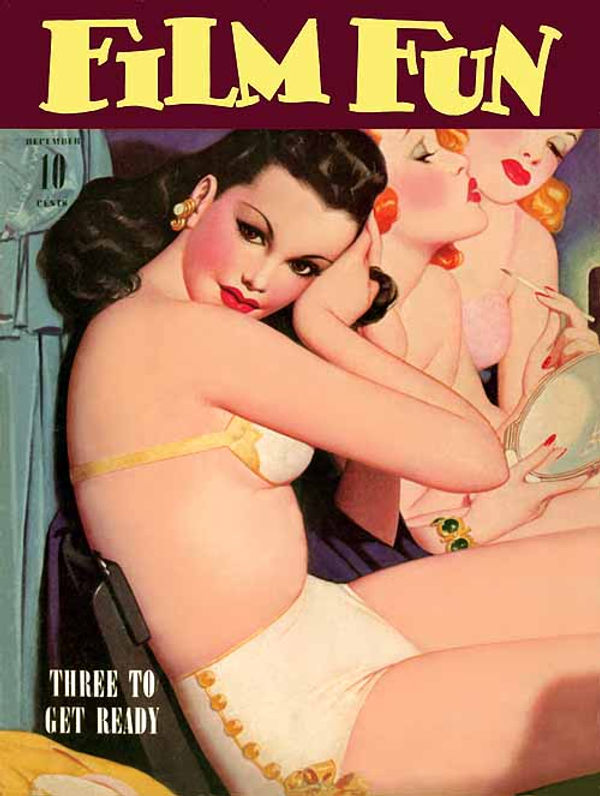
.
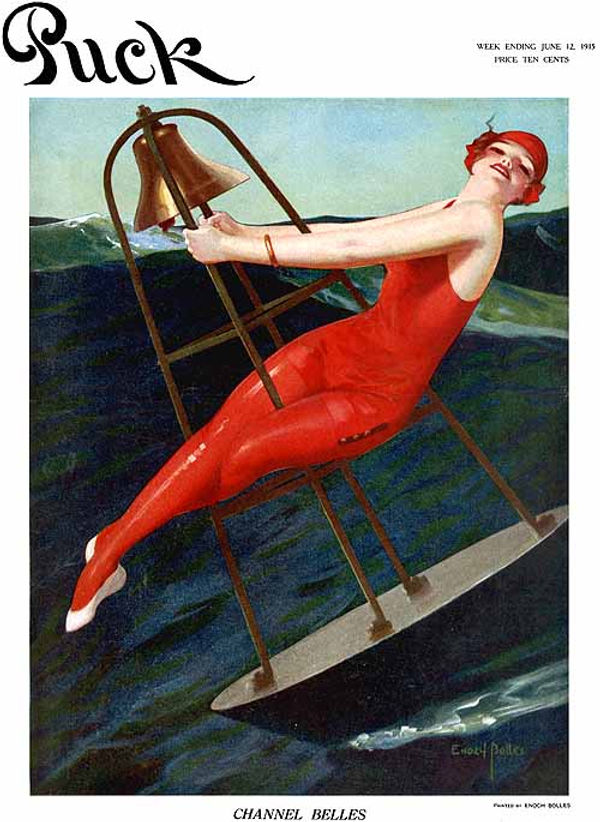
.

.

.

.

.

.

.

.

.
Rolf Armstrong
1889 – 1960
Rolf Armstrong
Rolf Armstrong is one of those famous American pin-up artists who created an array of amazing art work, portraits, and sketches. He was born to Richard and Harriet Armstrong on April 21, 1889. Later, the family moved to Detroit where Rolf spent most of his childhood. He started taking interest in art and paintings at a very young age. In 1919, Rolf decided to visit Paris to study art and literature. He made another trip to Paris later that same year to study at Académie Julian.
After finishing his studies, he returned to New York and started his own art studio. In a very short period of time, he became quite popular for his unique and outstanding pin-up art creations. During the 1920s and 1930s, a number of his works appeared on covers of popular magazines and sheets of music. Later, he became famous for making celebrity portraits. Some of his notable celebrity portraits include Greta Garbo, Boris Karloff, and Mary Pickford.
In 1921, Rolf Armstrong took up a course at Minneapolis to learn more about calendar art production. He studied this at Brown & Bigelow. In 1926, Armstrong’s work was widely popular throughout magazines and calendars. Later in 1927, he became one of the most popular calendar artists. During the early 1930s, he was hired by RCA to create calendar paint pin-ups exclusively for their advertisements. In 1960, Rolf Armstrong took his last breath on the Oahu Island of Hawaii. Even today, he is one of the best pin-up artists in our country.

Armstrong in his studio, with one of his so-called "Armstrong Girls" in the background. (1930)

Rolf Armstrong
.jpg)
Rolf Armstrong
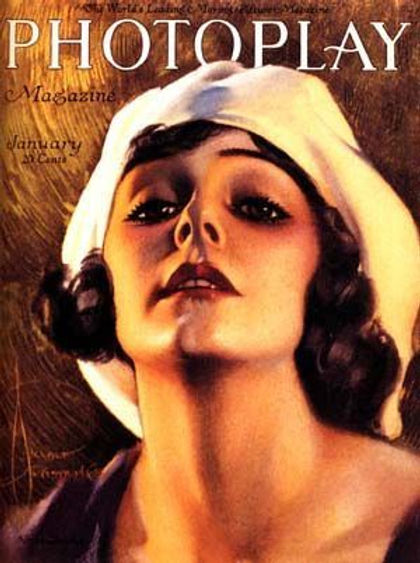
Rolf Armstrong
.jpg)
Rolf Armstrong
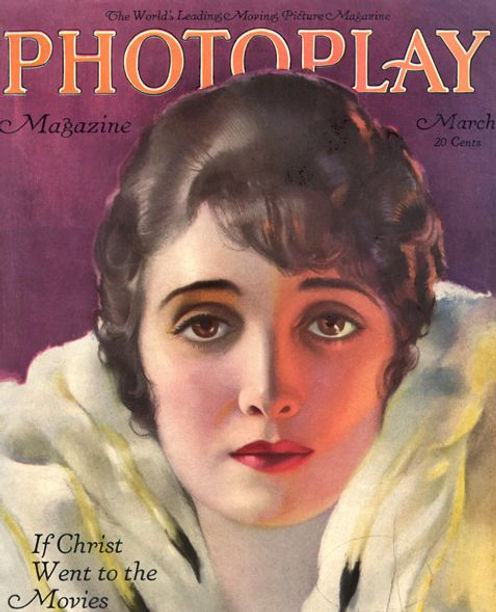
Rolf Armstrong
.jpg)
Rolf Armstrong

Rolf Armstrong
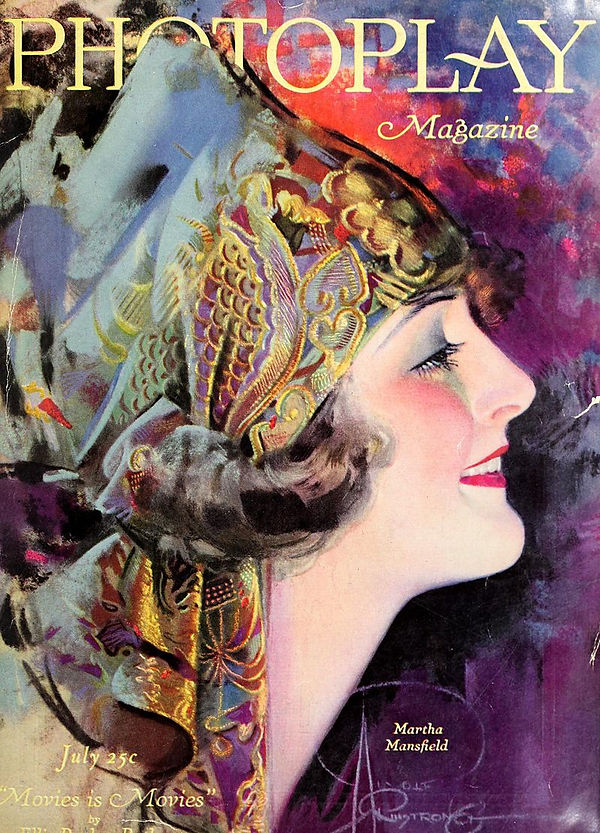
Rolf Armstrong
.jpg)
Rolf Armstrong

Rolf Armstrong
.jpg)
Rolf Armstrong

Rolf Armstrong

Rolf Armstrong
.jpg)
Rolf Armstrong

Rolf Armstrong
.jpg)
Rolf Armstrong

Rolf Armstrong
.jpg)
Rolf Armstrong

Rolf Armstrong
.jpg)
Rolf Armstrong

Rolf Armstrong
.jpg)
Rolf Armstrong

Rolf Armstrong
.jpg)
Rolf Armstrong

Rolf Armstrong
.jpg)
Rolf Armstrong

Rolf Armstrong
.jpg)
Rolf Armstrong
Earl Moran
1893 – 1984
Earl Steffa Moran
(December 8, 1893 – January 17, 1984) was an American pin-up photographer and glamor artist.
Moran's first instruction in art came under the direction of John Stich, an elderly German artist who also taught the great illustrator W.H.D. Koerner. Moran also studied with Walter Biggs at the Chicago Art Institute.
Moran later studied at the famed Art Students League in Manhattan, where he learned from the muralists Vincent Drumond, Robert Henri, Thomas Fogarty (Norman Rockwell's teacher), and the legendary anatomist George Bridgman. After moving back to Chicago in 1931 and opening a small studio where he specialized in photography and illustration, he sent some paintings of bikini-clad girls to two calendar companies; when both Brown and Bigelow and Thomas D. Murphy Company bought the work, his career was officially launched.
Moran signed an exclusive contract with Brown and Bigelow in 1932 and by 1937, his pinups had sold millions of calendars for the company. In 1940, Life ran a feature article entitled "Speaking of Pictures" which mostly focused on Moran's work and made him a national celebrity. In 1941, Moran helped the magazine publisher, Robert Harrison, to launch a new men's magazine called Beauty Parade, and he later contributed pin-ups to other Harrison magazines such as Flirt, Wink and Giggles.
In 1946, Moran moved to Hollywood though he had already painted many movie stars including Betty Grable, for publicity posters. Soon after his arrival, he interviewed a young starlet named Norma Jeane Dougherty who wanted to model for him. For the next four years, Marilyn Monroe posed for Moran and the two became friends. She always credited him with making her legs look better than they were as she felt they were too thin. Moran's work during this time period is now considered his most valuable;[3] a Moran Marilyn pastel art piece sold for $83,650 at Heritage Auctions in February 2011, nearly doubling the previous record for one of his works.
Moran lived in the San Fernando Valley from 1951 to 1955, hosting large parties, directing and starring in short television films, painting portraits of Earl Carroll's Vanities Girls, and maintaining his position as a star of the pin-up world.
After a move to Las Vegas (circa 1955), Moran decided to devote his time to painting fine-art subjects, with nudes as his favorite theme. Signing with Aaron Brothers Galleries, he painted for collectors until 1982, when his eyesight failed. Some of his earlier works for Harrison were signed "Steffa" or "Black Smith". Moran died in Santa Monica, California, on January 17, 1984.

EARL MORAN AND MARILYN MONROE
When Marilyn Monroe posed for Earl Moran in the first of their sessions that took place between 1946 and 1950, she was just 19 and an aspiring actress, while Moran had established himself as a leading illustrator of beautiful women; his work for magazines and calendars placed him in the company of Alberto Vargas and George Petty.
Earl Moran hired a young model named Norma Jean Dougherty through the Blue Book Agency in Los Angeles, in 1946. This was one of Marilyn’s earliest regular modeling assignments, to help pay the rent while she fought for an entree into the movie business. She posed for him off and on for the next four years. He usually took photos of her, which he used as reference for his pinup illustrations. He paid Marilyn ten dollars an hour to photograph her in various costumes and states of toplessness from 1946 to 1949.
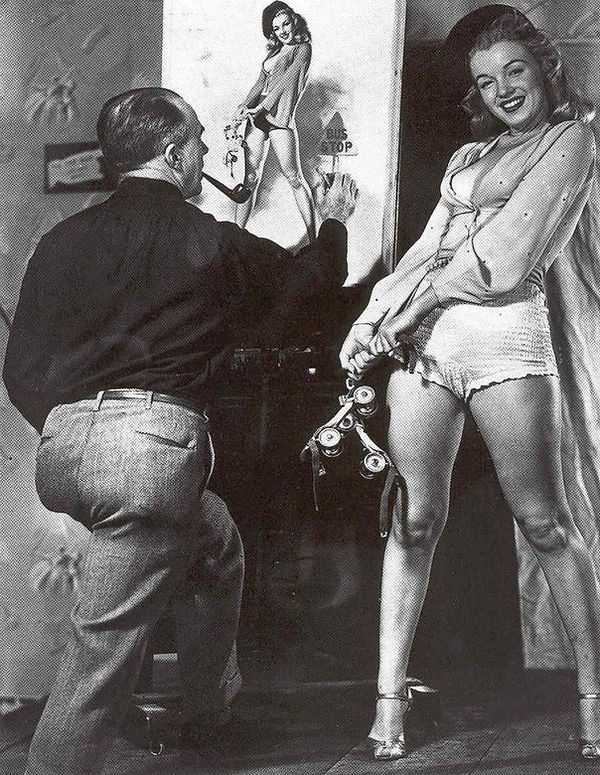
EARL MORAN AND MARILYN MONROE
1946 -1949
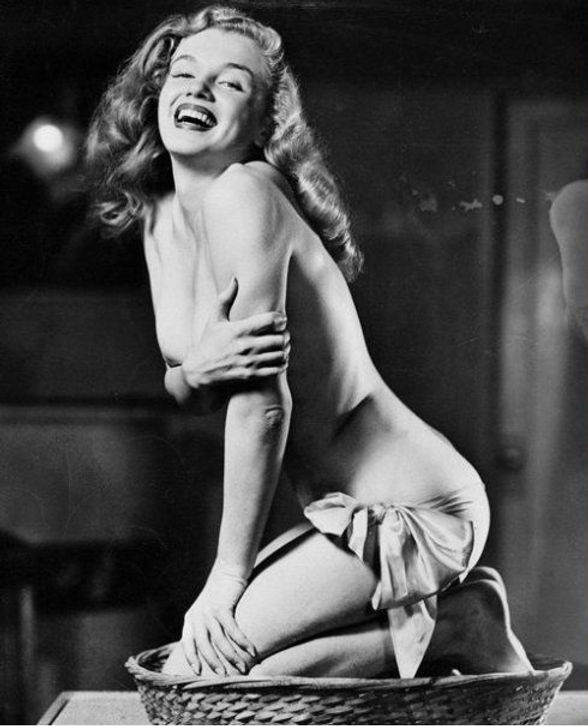
EARL MORAN
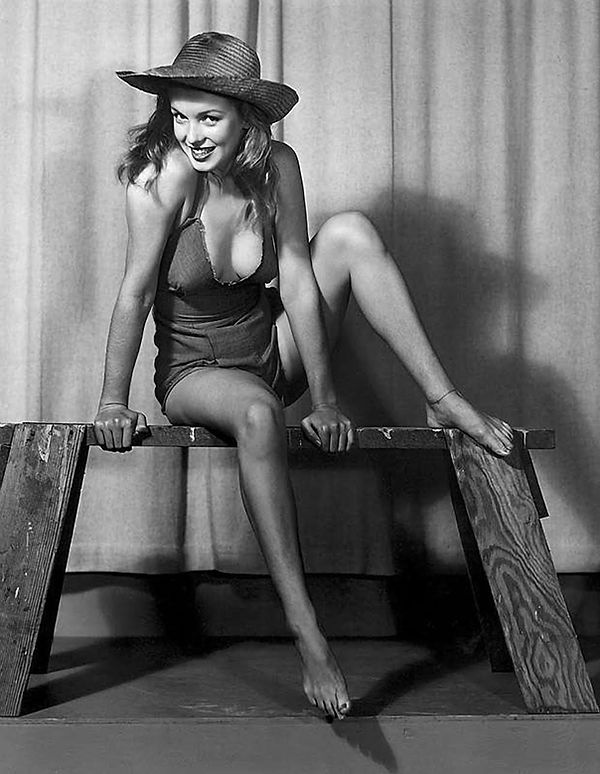
EARL MORAN

EARL MORAN

EARL MORAN
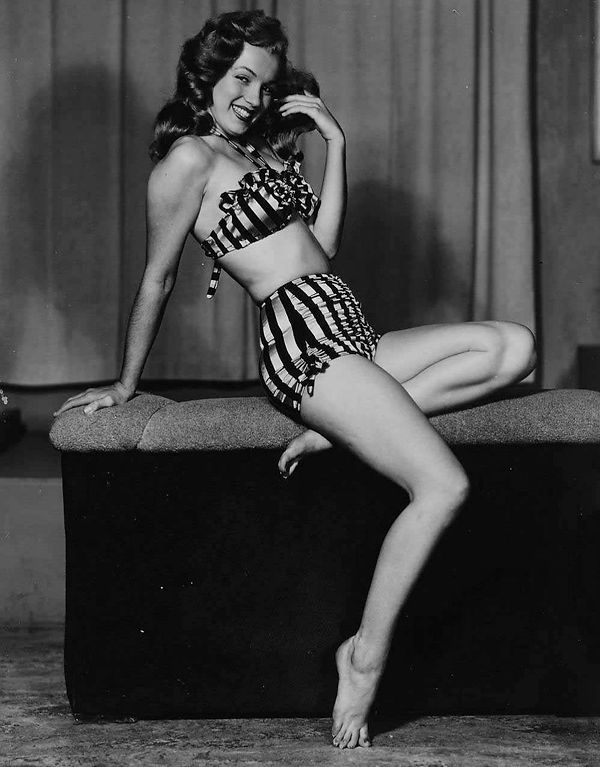
EARL MORAN
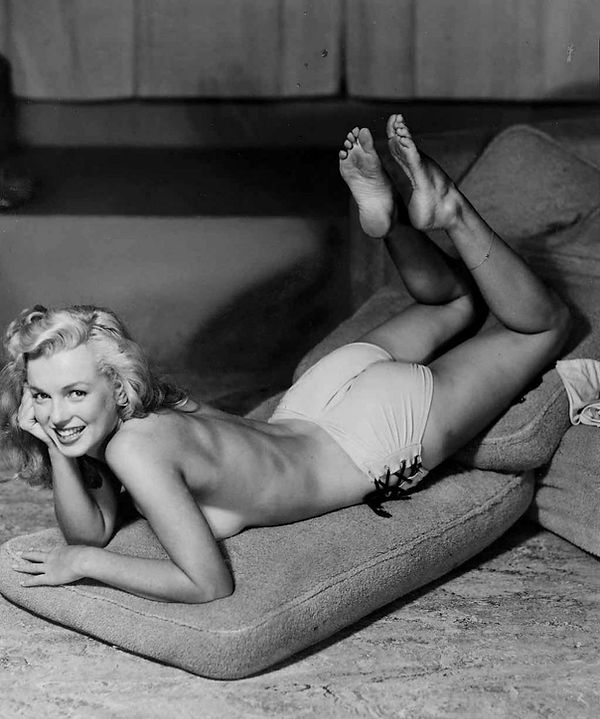
EARL MORAN

EARL MORAN

EARL MORAN

EARL MORAN

EARL MORAN

EARL MORAN

EARL MORAN
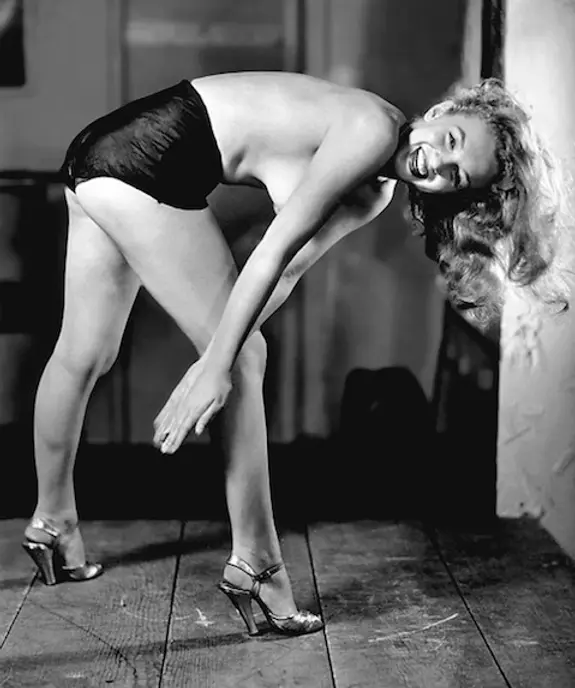
EARL MORAN

EARL MORAN

EARL MORAN

EARL MORAN

EARL MORAN
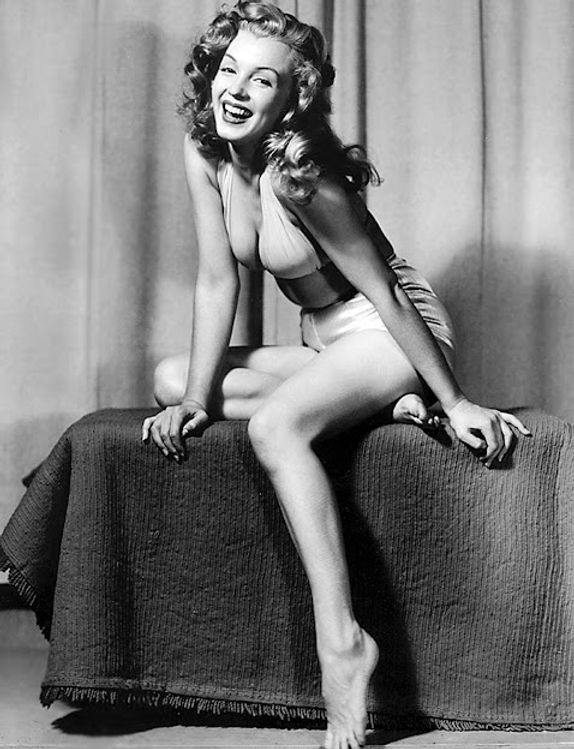
EARL MORAN

EARL MORAN

EARL MORAN

EARL MORAN

EARL MORAN

EARL MORAN

EARL MORAN
EARL MORAN
PIN UP
MODELED ON
MARILYN MONROE

EARL MORAN
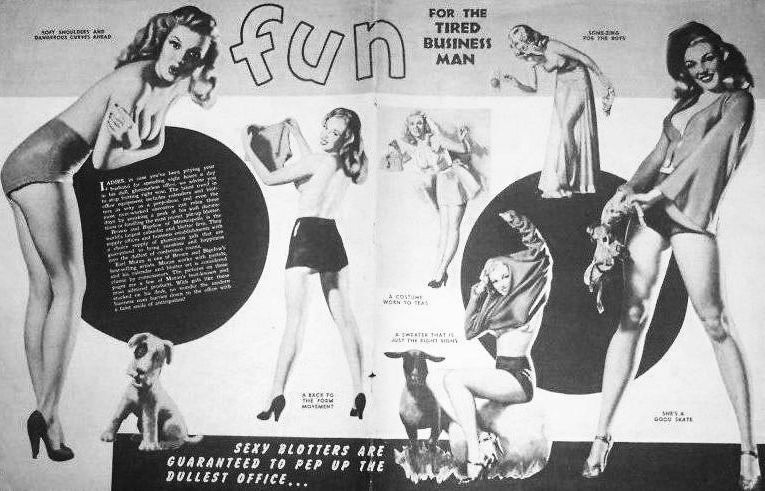
EARL MORAN

EARL MORAN

EARL MORAN

EARL MORAN

EARL MORAN

EARL MORAN

EARL MORAN

EARL MORAN

EARL MORAN

EARL MORAN
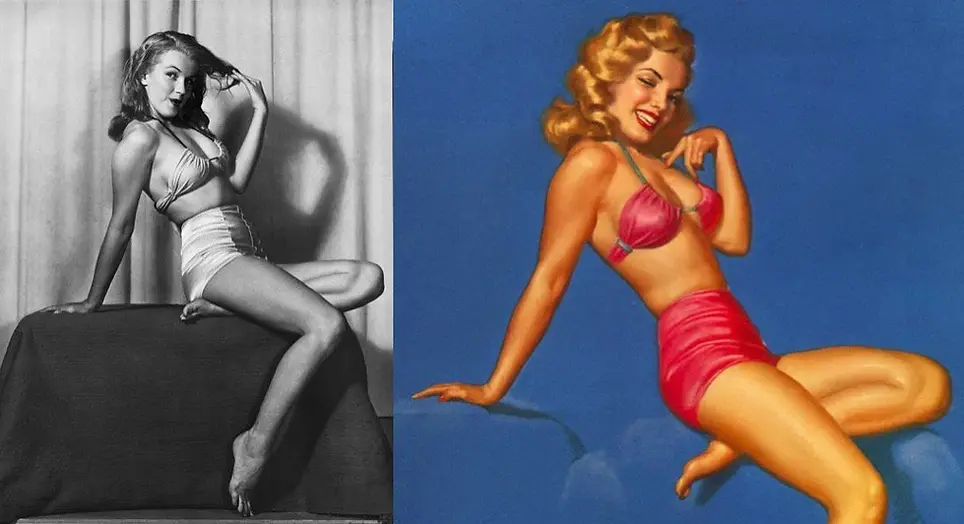
EARL MORAN

EARL MORAN

EARL MORAN

EARL MORAN
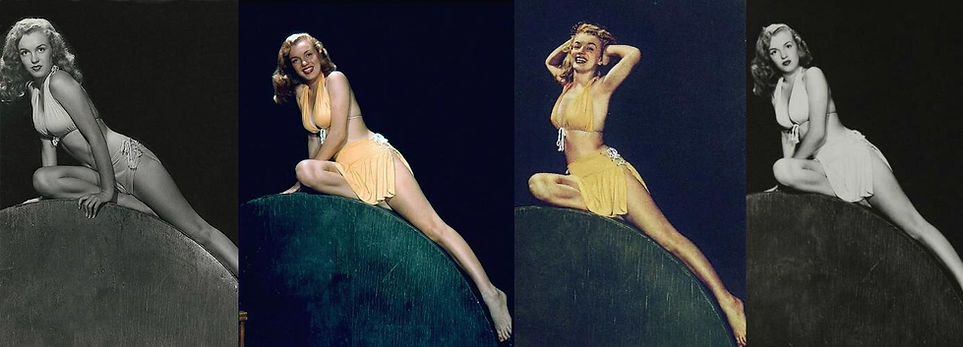
EARL MORAN

EARL MORAN
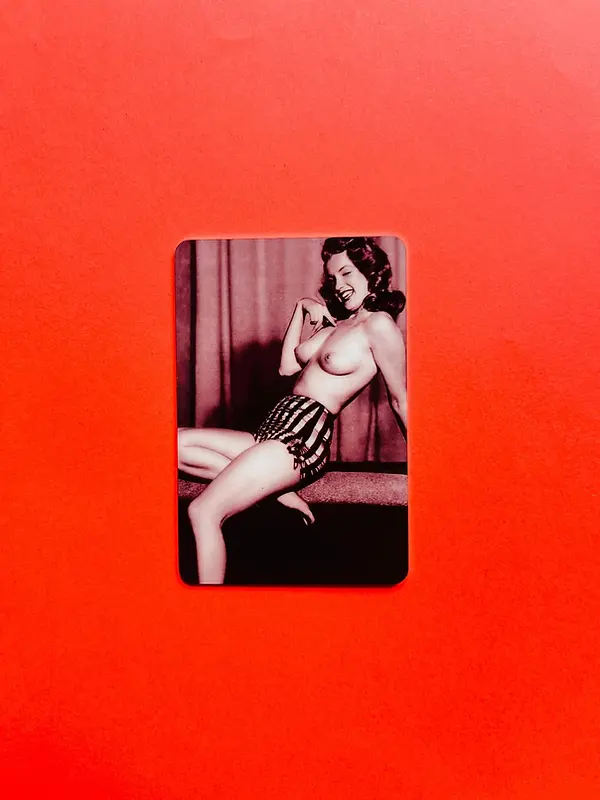
EARL MORAN

EARL MORAN

EARL MORAN

EARL MORAN

EARL MORAN

EARL MORAN

EARL MORAN

EARL MORAN

EARL MORAN

EARL MORAN

EARL MORAN

EARL MORAN

EARL MORAN

EARL MORAN
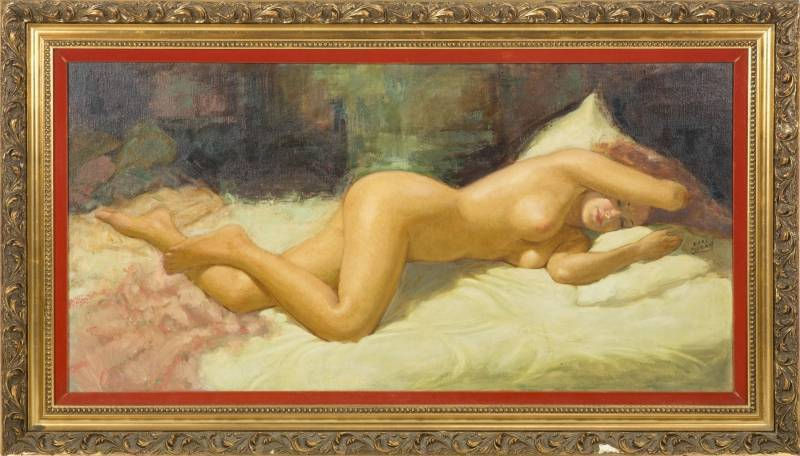
EARL MORAN

EARL MORAN

EARL MORAN

EARL MORAN
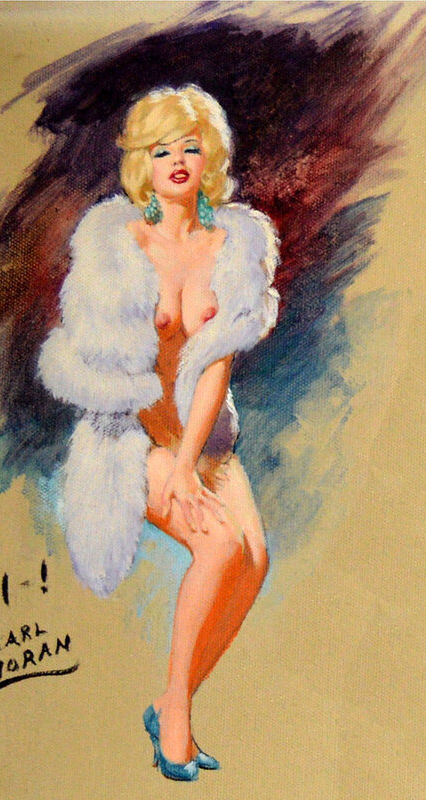
EARL MORAN

EARL MORAN

EARL MORAN

EARL MORAN

EARL MORAN

EARL MORAN

EARL MORAN

EARL MORAN

EARL MORAN

EARL MORAN
George Petty
1894 – 1975

George Petty
(April 27, 1894 – July 21, 1975) was an American pin-up artist. His pin-up art appeared primarily in Esquire and Fawcett Publications's True but was also in calendars marketed by Esquire, True and Ridgid Tool Company. Petty's Esquire gatefolds originated and popularized the magazine device of centerfold spreads. Reproductions of his work, known as "Petty Girls," were widely rendered by military artists as nose art decorating warplanes during the Second World War, including the Memphis Belle.
George Petty was born in Abbeville, the seat of Vermilion Parish in south Louisiana to George Brown Petty III and his wife, Sarah. George, IV, was the couple's second child; his sister Elizabeth had been born in 1891. The Petty family moved to Chicago, Illinois, just before the turn of the century, where George, III, a photographer of some note, enjoyed considerable success with images of young women, madonnas, and nudes.
Petty was not a particularly good student in high school, spending a great deal of time on extracurricular activities instead of schoolwork. His artistic bent first became obvious in high school, where he was the staff artist for the school newspaper.
During his high school years, he enrolled in evening classes at Chicago Academy of Fine Arts under the tutoring of Ruth VanSickle Ford, where he taught his own art course, charging classmates $5.00 per session. He also worked in his father's photo shop where he learned how to use an airbrush. In Paris, Petty studied art at the Académie Julian with Jean-Paul Laurens and others until 1916, when World War I caused Myron T. Herrick, ambassador at that time, to order all Americans to return home.
Petty returned to Chicago, and worked as an airbrush retoucher for a local printing company. He was able to establish himself as a freelance artist, painting calendar girls and magazine covers for The Household. By 1926, he was able to open his own studio.
George Petty never discussed in detail those artists who influenced him, other than J. C. Leyendecker (an artist for The Saturday Evening Post during George's high school days) for his interpretation of men, Coles Phillips for his technique, and Maxfield Parrish for his use of light. However, it can be inferred from his later work that other influences included artists who were extremely popular in Paris at the time, such as Alfons Mucha, George Barbier and, in particular, the watercolor technique of England's William Russell Flint.
Petty is especially known for "the Petty Girl", a series of pin-up paintings of women done for Esquire from its first issue in 1933 until 1956. Petty frequently depicted these women with the relative lengths of their legs being longer—and the relative sizes of their heads being smaller—than those of his actual models.
George Petty used his daughter as the model for an optional hood ornament, "Flying Lady" available on the Nash automobiles in the early 1950s.
Petty appeared as a guest on the popular TV program What's My Line? on November 20, 1955.
Petty died in San Pedro, California, on July 21, 1975.

George Petty
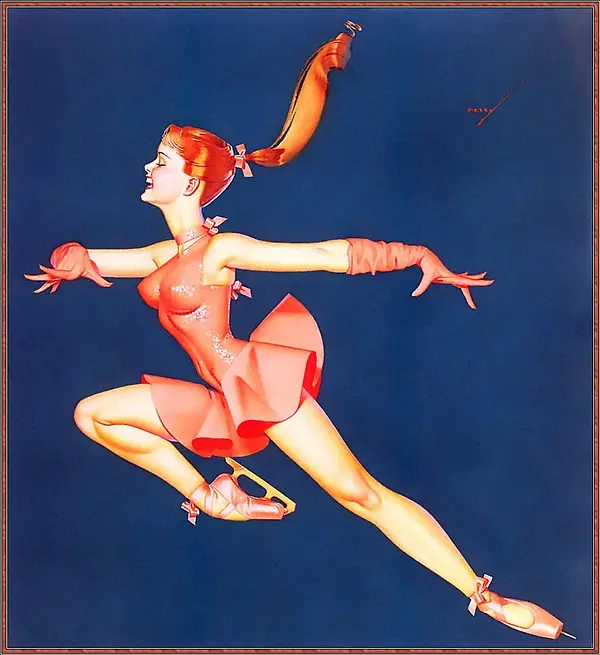
George Petty
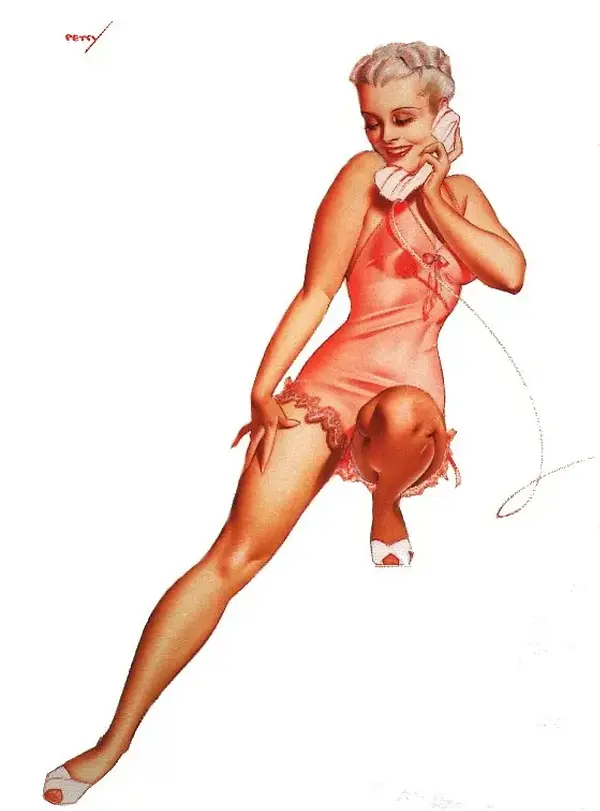
George Petty

George Petty

George Petty

George Petty

George Petty

George Petty

George Petty
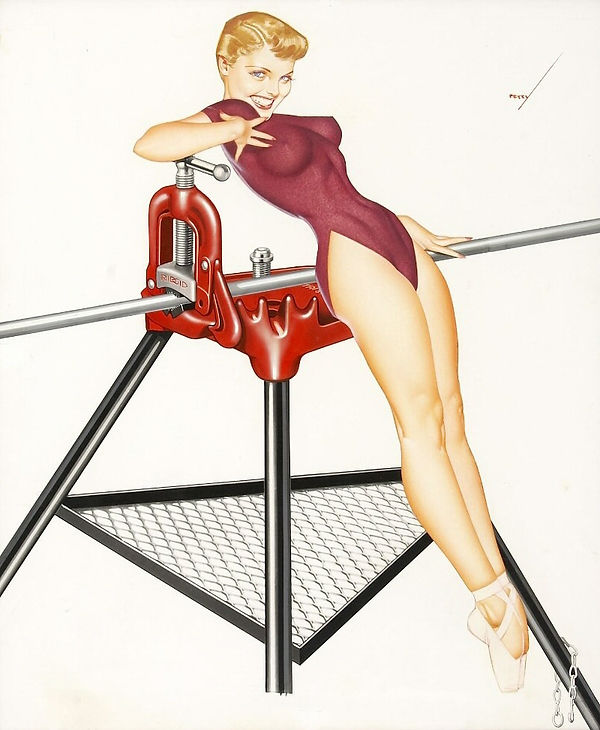
George Petty

George Petty

George Petty
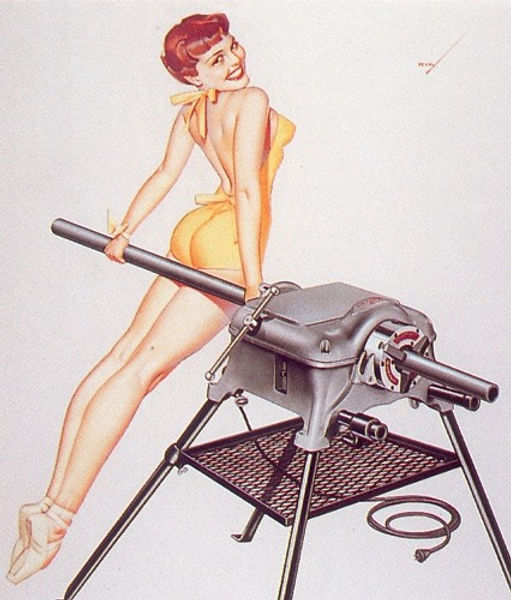
George Petty

George Petty

George Petty
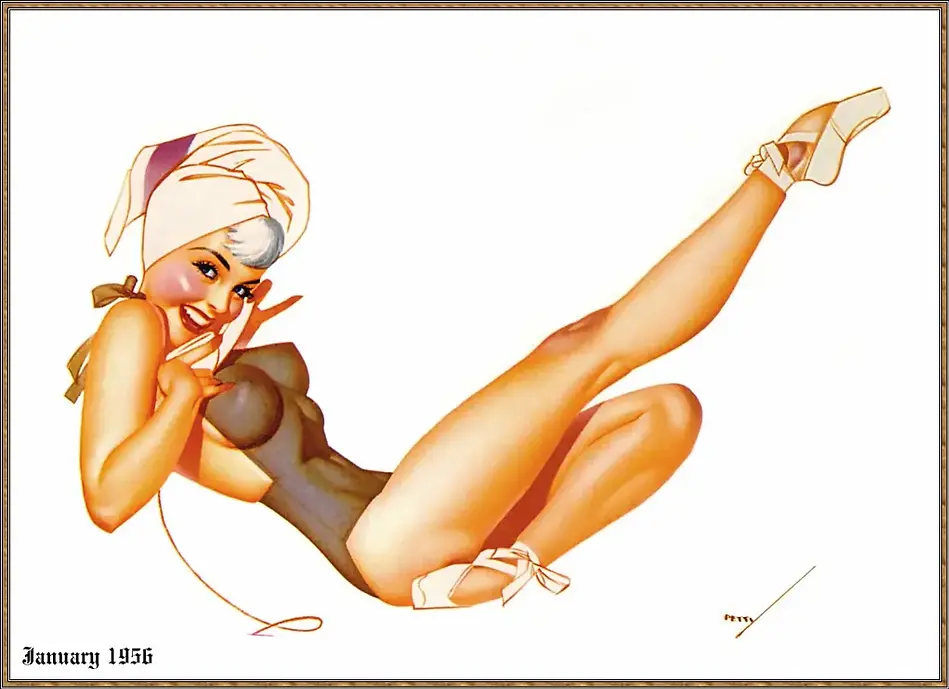
George Petty

George Petty

George Petty

George Petty

George Petty

George Petty

George Petty

George Petty
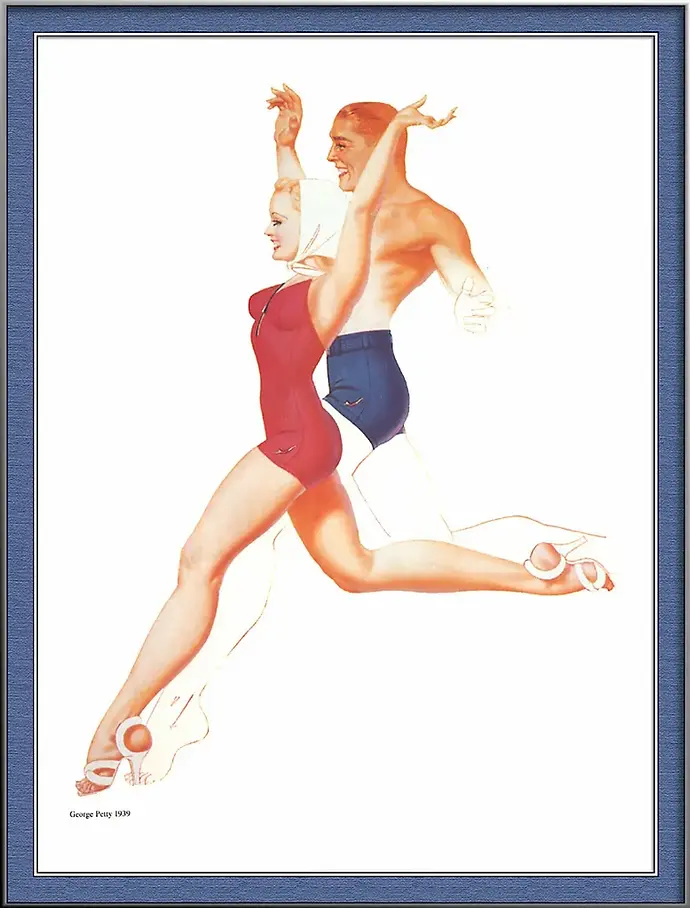
George Petty
Albert Vargas
1896 – 1982
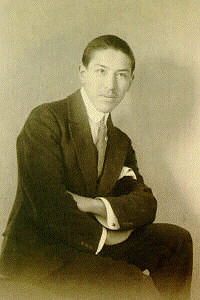
Albert Vargas
Joaquin Alberto Vargas y Chávez (9 February 1896 – 30 December 1982) was a Peruvian-American painter of pin-up girls. He is often considered one of the most famous of the pin-up artists. Numerous Vargas paintings have sold and continue to sell for tens of thousands around the world.
Born in Arequipa, Peru, he was the son of noted Peruvian photographer Max T. Vargas. Alberto Vargas moved to the United States in 1916 after studying art in Europe, particularly in Zurich and Geneva, prior to World War I. While he was in Europe he came upon the French magazine La Vie Parisienne, with a cover by Raphael Kirchner, which he said was a great influence on his work.
His early career in New York included work as an artist for the Ziegfeld Follies and for many Hollywood studios. Ziegfeld hung his painting of Olive Thomas at the theater, and she was thought of as one of the earliest Vargas Girls. Vargas' most famous piece of film work was the poster of the 1933 film The Sin of Nora Moran, which portrays a near-naked Zita Johann in a pose of desperation, bearing little resemblance to the real actress. The poster is frequently named one of the greatest movie posters ever made.
Vargas became famous in the 1940s as the creator of iconic World War-II era pin-ups for Esquire magazine known as "Vargas Girls." Between 1940 and 1946 Vargas produced 180 paintings for the magazine. The nose art of many American and Allied World War II aircraft was inspired and adapted from these Esquire pin-ups, as well as those of George Petty, and other artists.
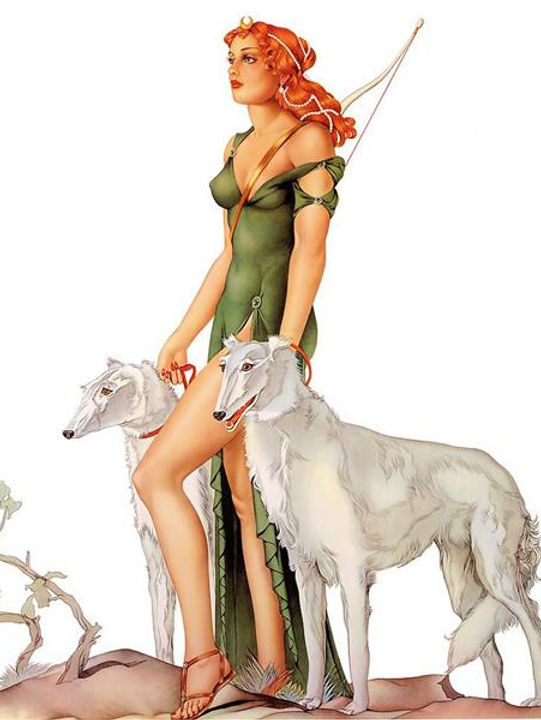
AlbertoVargas

AlbertoVargas

AlbertoVargas

AlbertoVargas
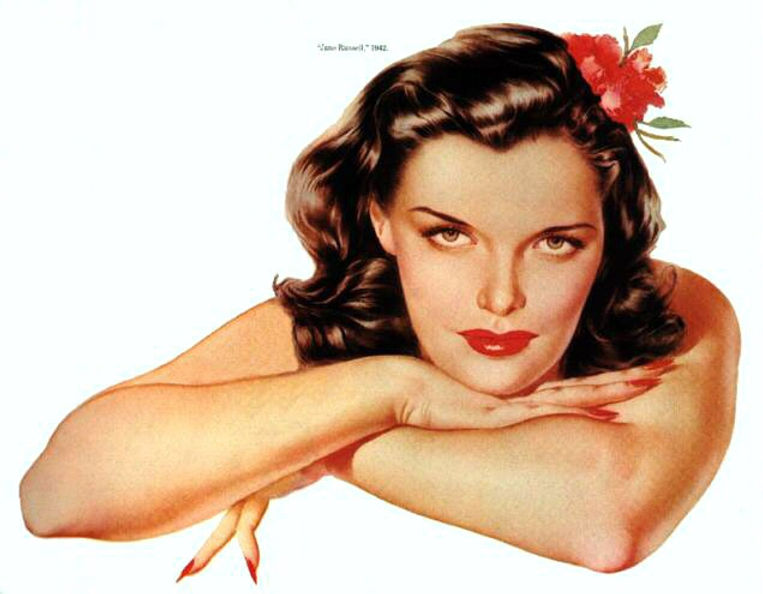
AlbertoVargas

AlbertoVargas

AlbertoVargas

AlbertoVargas

AlbertoVargas

AlbertoVargas

AlbertoVargas

AlbertoVargas
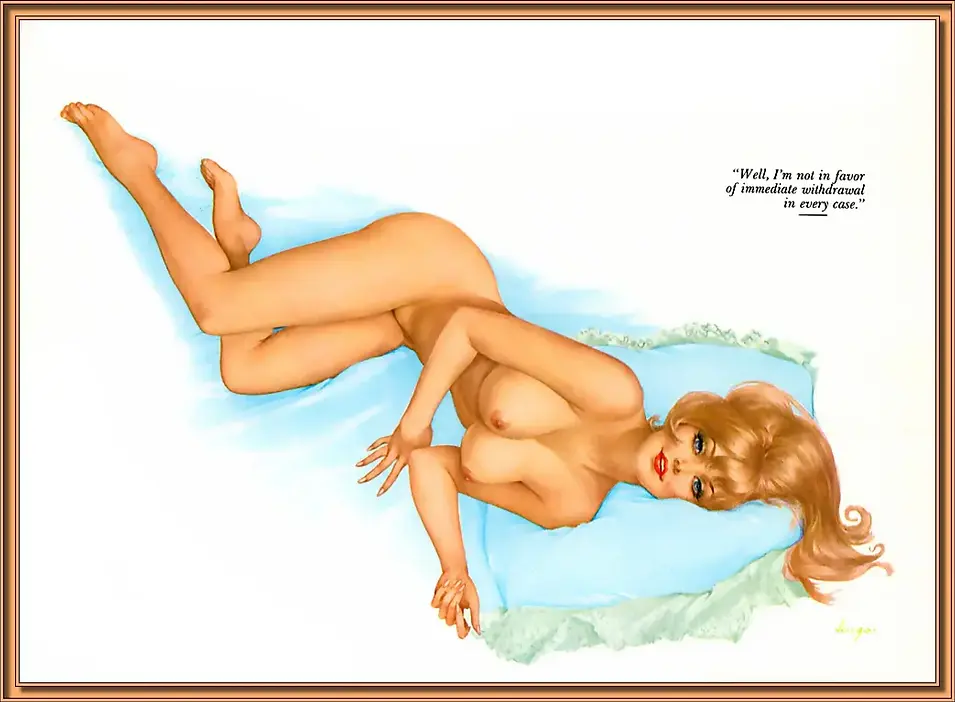
AlbertoVargas
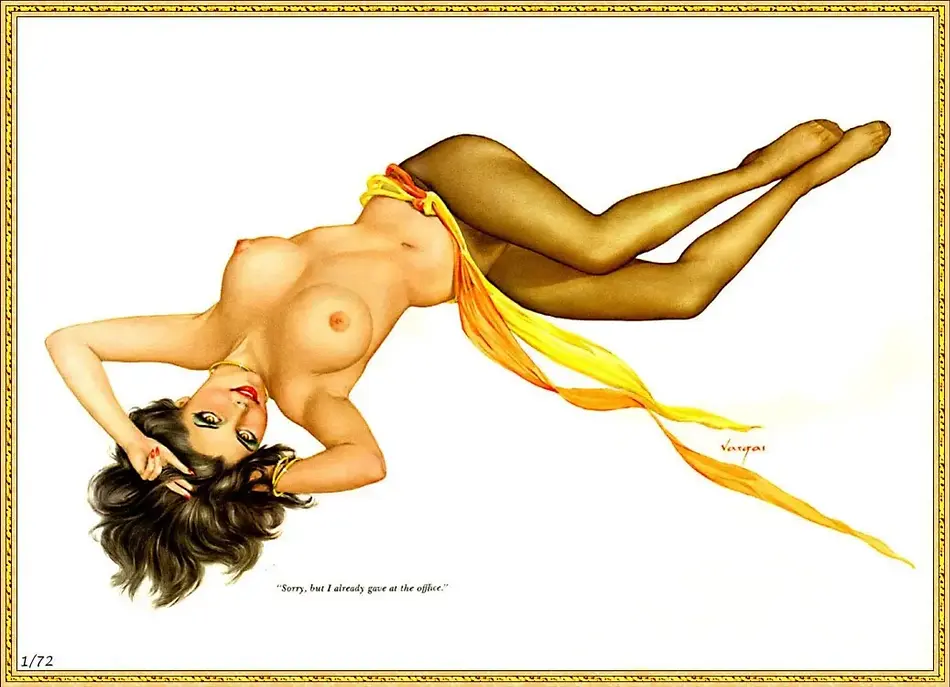
AlbertoVargas
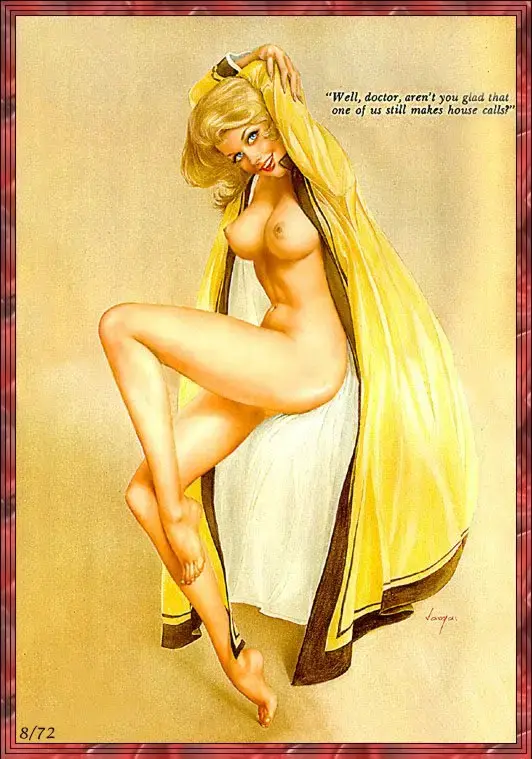
AlbertoVargas

AlbertoVargas

AlbertoVargas
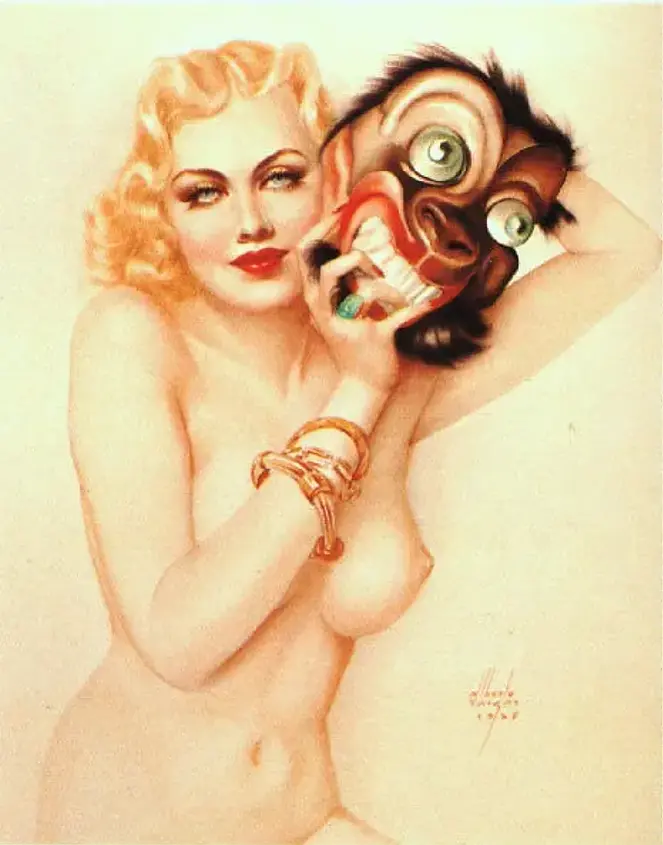
AlbertoVargas
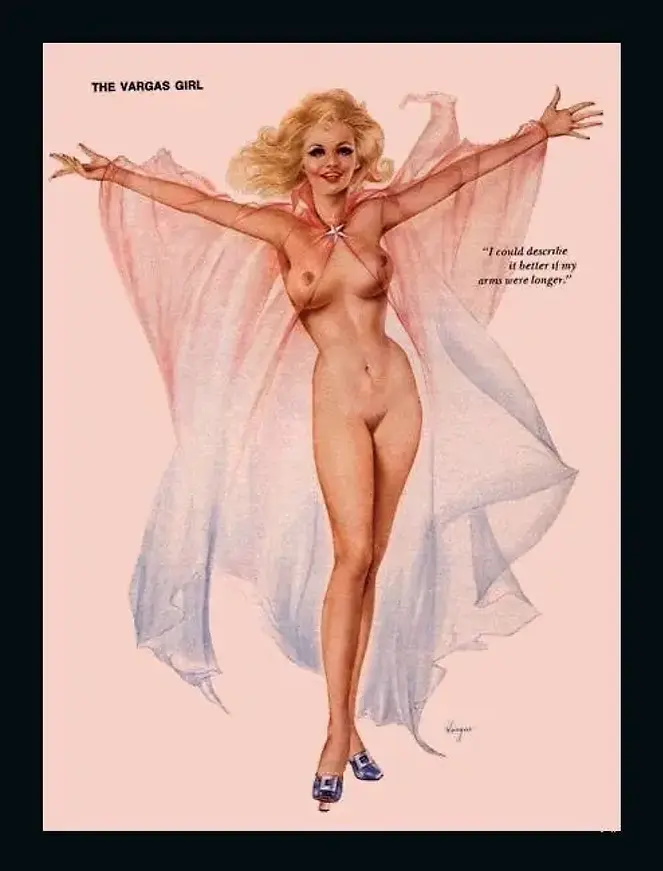
AlbertoVargas

AlbertoVargas

AlbertoVargas

AlbertoVargas
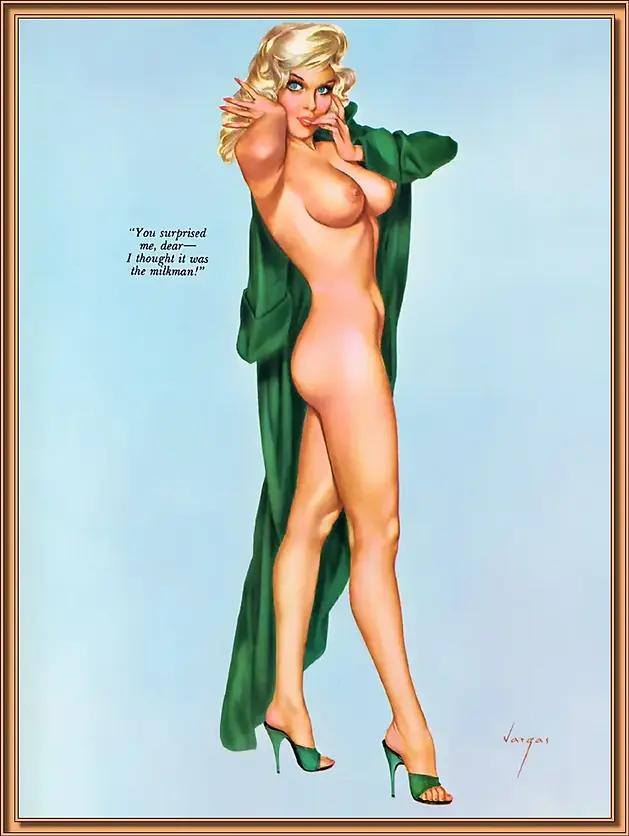
AlbertoVargas
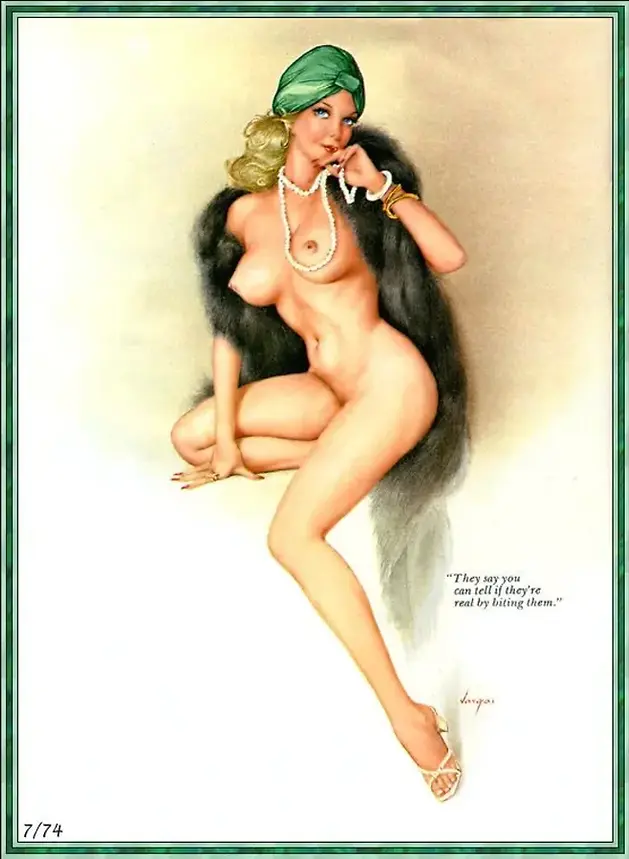
AlbertoVargas

AlbertoVargas
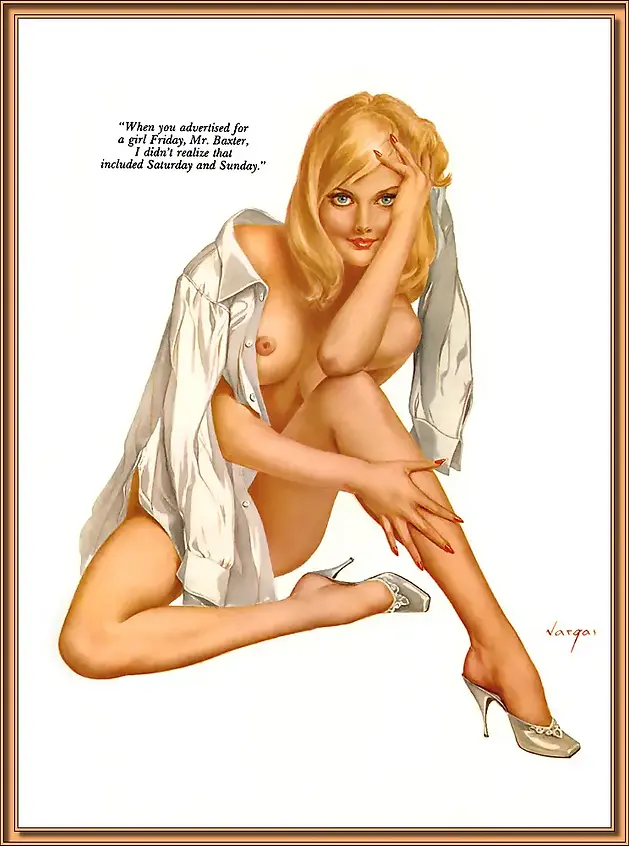
AlbertoVargas

AlbertoVargas

AlbertoVargas

AlbertoVargas

AlbertoVargas

AlbertoVargas

AlbertoVargas

AlbertoVargas
Haddon Sundblom
1899 – 1976

Haddon Sundblom
Haddon Hubbard "Sunny" Sundblom (June 22, 1899 – March 10, 1976) was an American artist of Swedish and Finnish descent and best known for the images of Santa Claus he created for The Coca-Cola Company. Sundblom's friend Lou Prentice was the original model for the illustrator's Santa.
Sundblom was born in Muskegon, Michigan, to a Swedish-speaking family. His father, Karl Wilhelm Sundblom, was of the Swedish-speaking population of Finland and came from the farm Norrgårds in the village of Sonnboda in Föglö, Åland Islands, then part of the Russian Grand Duchy of Finland now Finland, while his mother Karin Andersson was from Sweden. Sundblom studied at the American Academy of Art.
Sundblom is best remembered for his advertising work, specifically the Santa Claus advertisement. It was he who drew Santa Claus in a red suit during the twenties when he painted for The Coca-Cola Company, starting in 1931. Sundblom's Claus firmly established the larger-than-life, grandfatherly Claus as a key figure in American Christmas imagery. So popular were Sundblom's images of Claus (Sundblom's images are used by Coca-Cola to this day) that Sundblom is often wrongly credited as having created the modern image of Santa Claus.
According to the Coca-Cola company: "For inspiration, Sundblom turned to Clement Clarke Moore's 1822 poem "A Visit From St. Nicholas" (commonly called "'Twas the Night Before Christmas"). Moore's description of St. Nick led to an image of Santa that was warm, friendly, pleasantly plump and human. For the next 33 years, Sundblom painted portraits of Santa that helped to create the modern image of Santa – an interpretation that today lives on in the minds of people of all ages, all over the world." Sundblom's family most likely also got Christmas greetings sent from Sweden and Finland, Åland. The cards in Sweden and Swedish-speaking Finland had motifs painted by Jenny Nyström of a friendly and charming jultomte (Santa) dressed in red and white.
In 1942 Sundblom created Coke's mascot Sprite Boy, who appeared in print ads during the 1940s and 1950s.
Also in 1942 he was the artist for an iconic WWII United States Marine Corps recruitment poster. In it, a Marine Sergeant stands at parade rest with a headline that reads, "Ready - Join U.S. Marines Land Sea Air" and the copy continues at the bottom with, "Apply, or write, to nearest recruiting station."
Quaker Oats asked Sundblom to update their logo in 1957. He provided the colorful head-and-shoulders version which was on their packaging until 1969, when it was made over in blue and white by Saul Bass.
Sundblom is recognized as a major influence on many well known pin-up artists, such as Harold W. McCauley, Gil Elvgren, Andrew Loomis, Edward Runci, Joyce Ballantyne, Art Frahm, and Harry Ekman. In the mid-1930s, he began to paint pin-ups and glamour pieces for calendars. Sundblom's last assignment, in 1972, was a cover painting for Playboy's Christmas issue which included a short bio with his photo.
Sundblom died at Edgewater Hospital in Chicago in 1976.
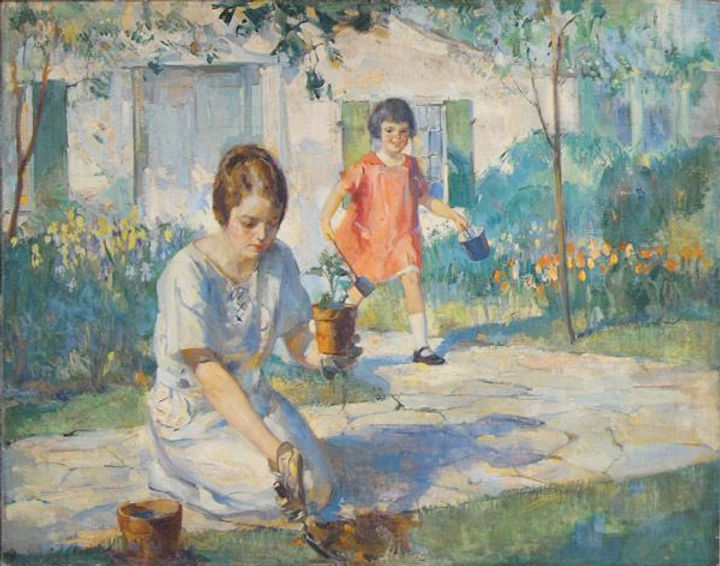
Energy to meet the languid moods of spring (Cream of Wheat)
Haddon Sundblom
1924

When a Little Girl Needs Her Mother Most
Haddon Sundblom
1928

Evening by the Fire
Haddon Sundblom
1930

Long Distance
Haddon Sundblom
1933

Coca Cola Springboard Girl Tin Serving Tray
Haddon Sundblom
c.1939

Reflections of Me, Colson, Calendar illustration
Haddon Sundblom
c.1940
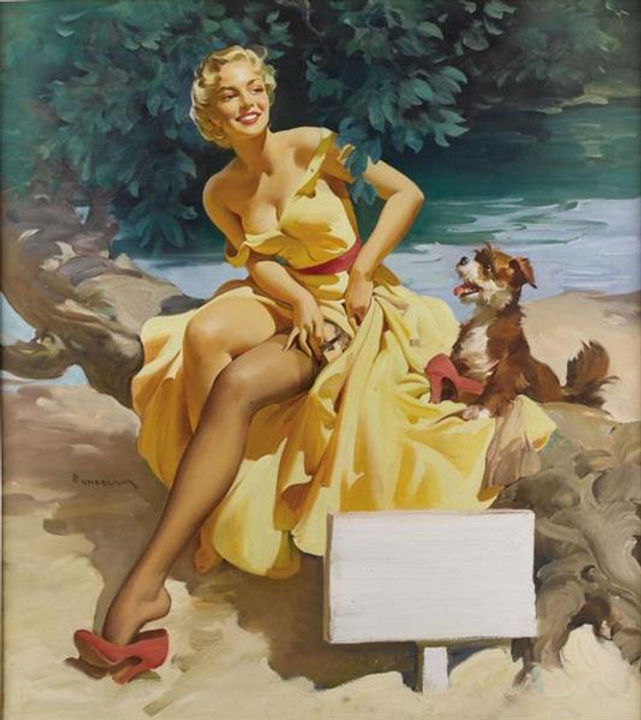
Shaw-Barton Calendar Company pinup
Haddon Sundblom
c.1950
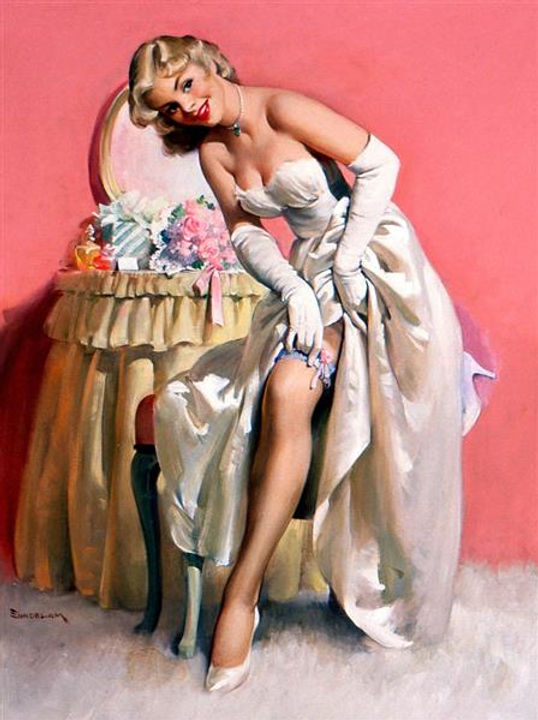
Miss Sylvania
Haddon Sundblom
c.1960

Skiers (Snow emergency)
Haddon Sundblom
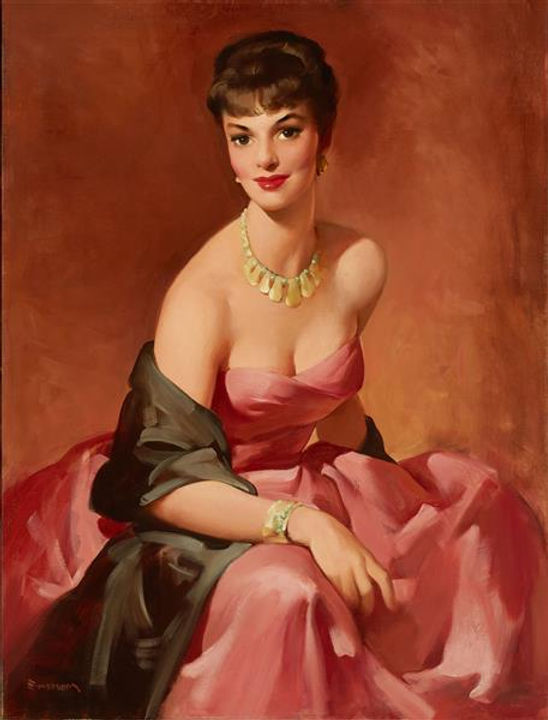
Portrait of a Society Lady
Haddon Sundblom

Untitled Pin-up
Haddon Sundblom

Santa
Haddon Sundblom

Naughty Santa
Haddon Sundblom

Santa
Haddon Sundblom
Art Frahm
1907–1981
Art Frahm
(1907–1981) was an American painter of campy pin-up girls and advertising. Frahm lived in Chicago, and was active from the 1940s to 1960s. He was commercially successful.
Frahm had adequate technical competence for his medium, with a style somewhat reminiscent of Norman Rockwell's, though more cartoony. He was mostly influenced by commercial artist Haddon Sundblom, with whom Frahm may have worked as an assistant early in his career. Frahm's forte was depicting beautiful young white women, taking in rendering their legs and figures. Frahm's depictions of the women's faces are less successful, often tending towards plastic doll-like expressions. Minor problems with perspective and unrealistic depiction of subsidiary figures and objects are common in Frahm's work. Some of his artistic touches were deliberately unrealistic and artistically daring—for instance, his coloring of a city street lemon-yellow in an otherwise realist painting.
Today, Frahm is best known for his "ladies in distress" pictures involving beautiful young women whose panties mysteriously fall to the ground in a variety of public situations, causing maximum embarrassment to his pin-up girls and often causing them to spill their bag of groceries. In one of Frahm's noted idiosyncratic touches, celery is often depicted. The falling-panties art has a small cult following as mid-20th century kitsch, or even as fetish art. The works have been described with irony by James Lileks and Frahm's art works are available on the Internet. The falling-panties paintings were imitated by other pin-up artists, such as Jay Scott Pike and Al Brulé.

Art Frahm

Art Frahm

Art Frahm

Art Frahm

Art Frahm

Art Frahm

Art Frahm

Art Frahm

Art Frahm

Art Frahm
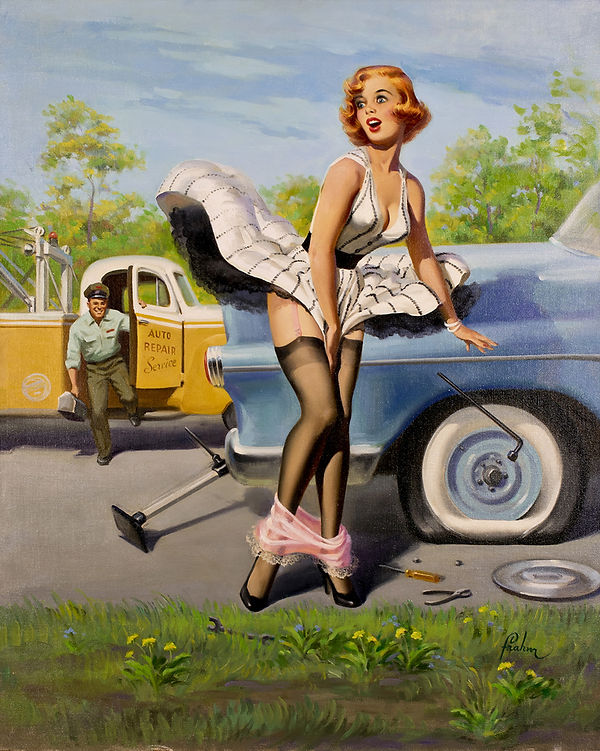
Art Frahm

Art Frahm

Art Frahm

Art Frahm

Art Frahm

Art Frahm

Art Frahm

Art Frahm

Art Frahm
Robert Skemp
1910 - 1984
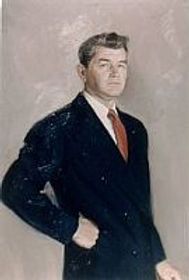
Robert Oliver Skemp
Robert Oliver Skemp, (1910 - 1984), was born in 1910 the son of Olive Hess Skemp, a prominent rug designer and artist, and grew up with a love of the sea and the ships that sailed it. A librarian aunt provided books with stories like Treasure Island, 20,000 Leagues under the sea, and Mysterious Island with illustrations by artists like N.C. Wyeth, Meade Schaeffer and others.
At age 16 he enrolled in the Arts Student's League of New York to study with Thomas Hart Benton, George Bridgeman, and Frank V. DuMond. Still a young man, he joined the merchant marines and went around the world on a cargo ship, traveling to Europe, the Middle East, Ind ... Displaying 750 of 2586 characters.
Subscriber Members, please Sign In for artist biographies and for all services.
For non-paying users, good news! Full text bios for all artists are available every Friday.

Robert Skemp

Robert Skemp

Robert Skemp

Robert Skemp

Robert Skemp

Robert Skemp

Robert Skemp
Alfred Leslie Buell
1910–1996

Alfred Leslie Buell
(1910–1996) was an American painter of pin-up art. He was born in Hiawatha, Kansas in 1910, and grew up in Cushing, Oklahoma. He attended some classes at the Art Institute of Chicago, which, in concert with a trip to New York City, decided him on a career in art.
In 1935, Buell and his wife moved to Chicago, Illinois, where he joined the Stevens/Hall/Biondi Studio. By 1940, he had opened his own studio. During this period, he did a number of pin-ups for the Gerlach-Barklow calendar company. Buell also did work for several other calendar companies in the early 1940s.
During World War II, Buell was rejected by the draft, so he spent the war painting a variety of popular and patriotic pin-ups for Brown & Bigelow. After the war was over, he began contributing to Esquire's Gallery of Glamour.
Buell returned to Brown & Bigelow in the late 1950s. He continued to paint glamour and pin-ups until about 1965, when he retired from commercial art. He remained active until he was injured in an accident in 1993, after which he remained in a nursing home until his death in 1996.
Buell produced two calendars for Brown & Bigelow, the first in 1960 titled "Al Buell's Delectabelles" and the other in 1961 called "Al Buell's Beauties."

Alfred Leslie Buell

Alfred Leslie Buell

Alfred Leslie Buell

Alfred Leslie Buell

Alfred Leslie Buell

Alfred Leslie Buell

Alfred Leslie Buell

Alfred Leslie Buell

Alfred Leslie Buell
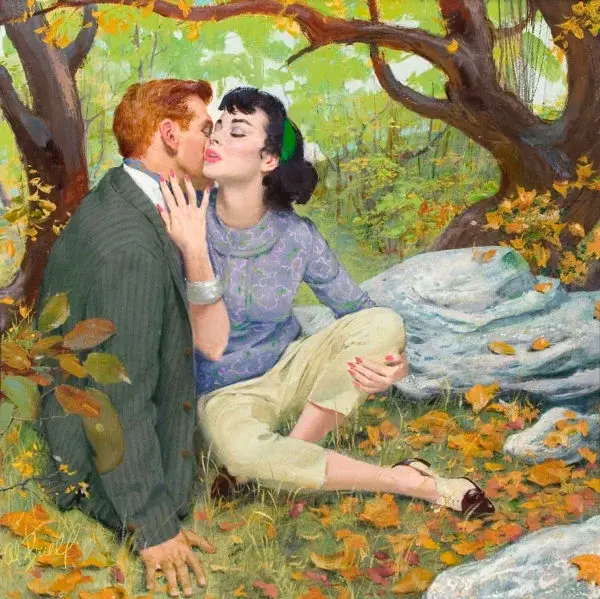
Alfred Leslie Buell

Alfred Leslie Buell

Alfred Leslie Buell

Alfred Leslie Buell

Alfred Leslie Buell
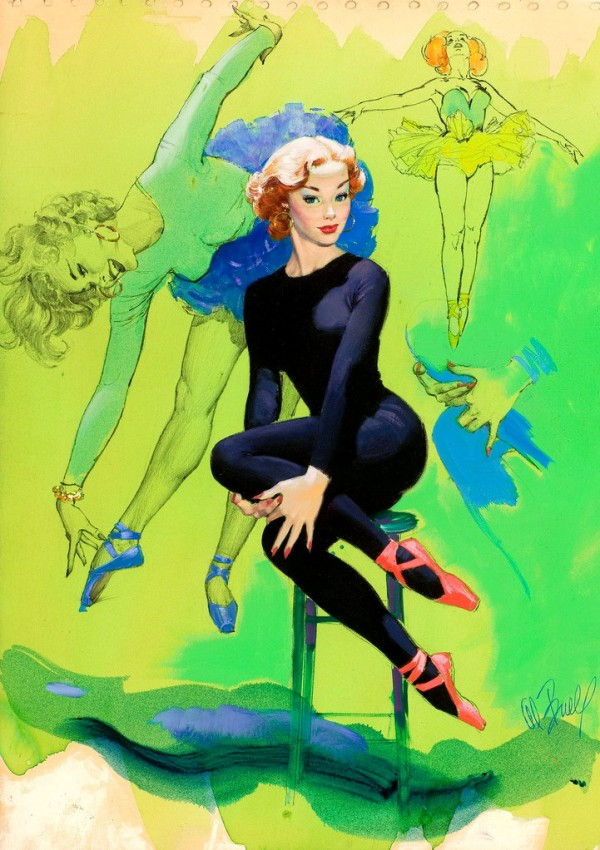
Alfred Leslie Buell

Alfred Leslie Buell

Alfred Leslie Buell

Alfred Leslie Buell

Alfred Leslie Buell
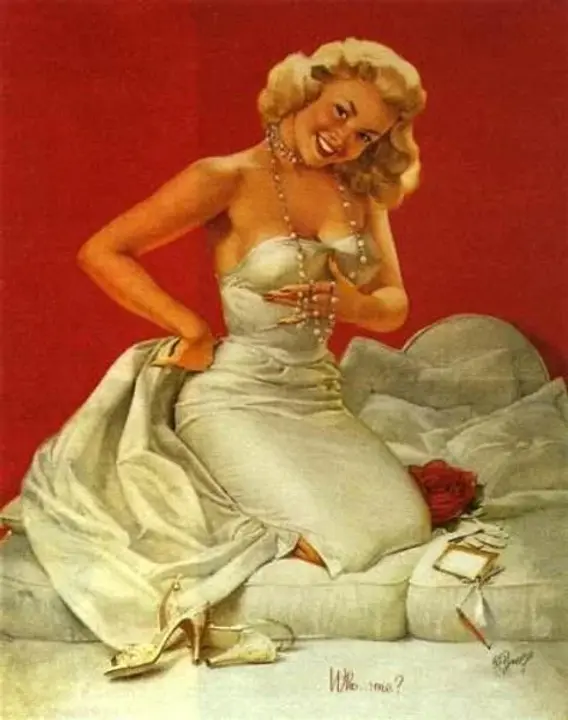
Alfred Leslie Buell
Ernest Chiriaka
1913 - 2010

Ernest Chiriaka
Anastassios Kyriakakos was born to Greek immigrant parents in New York City May 11th, 1913. Adopting the more American name of Ernest Chiriaka, he was raised in the ghetto of the Lower East Side. One cannot conceivably imagine the hardships young Ernest must have faced as his father struggled to find work and his mother sacrificed to raise he and his five siblings. Out of humble beginnings and intense suffering came one of the most talented American noir artists of our time.
Liberty Magazine was the first to purchase cover art from Ernest (known as a “slick”) in July of 1950. Sadly, the magazine suddenly closed their doors before Ernest’s August cover hit newsstands. Said Ernest,
“I thought, ‘Hey, Holy Cow! I’m on the cover of Liberty! That’s great news.’ And they folded, right then and there, with my cover. It never came out! Gr-r-r! That was a dirty deal! My first slick, and it folds up!”
Chiriaka’s first real success didn’t arrive until 1952, when he was commissioned to paint two pin-ups for the Esquire calender. He apparently made waves with his work, because the following year he was asked to paint all twelve lovely ladies. He continued working for magazines and pulp publishers (doing book covers) for many years afterward.
Ernest Chiriaka died on April 27th, 2010 at the age of 96. His noir art stands as a pillar in the genre.
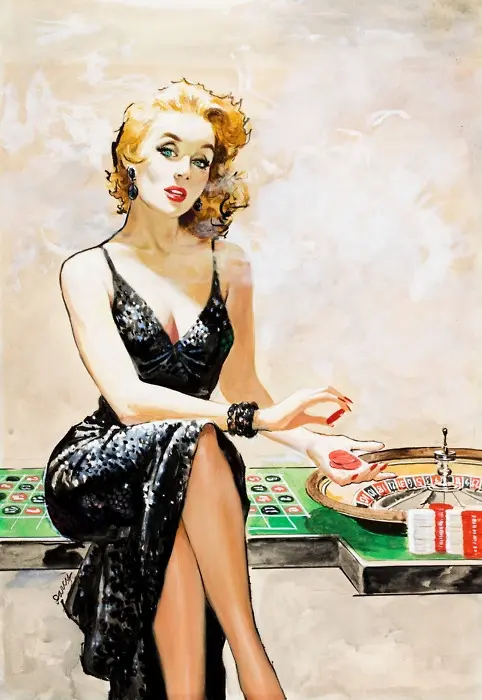
Ernest Chiriaka

Ernest Chiriaka
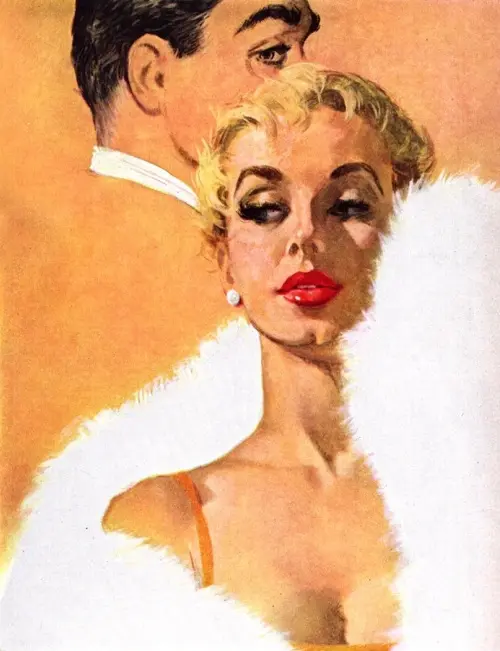
Ernest Chiriaka
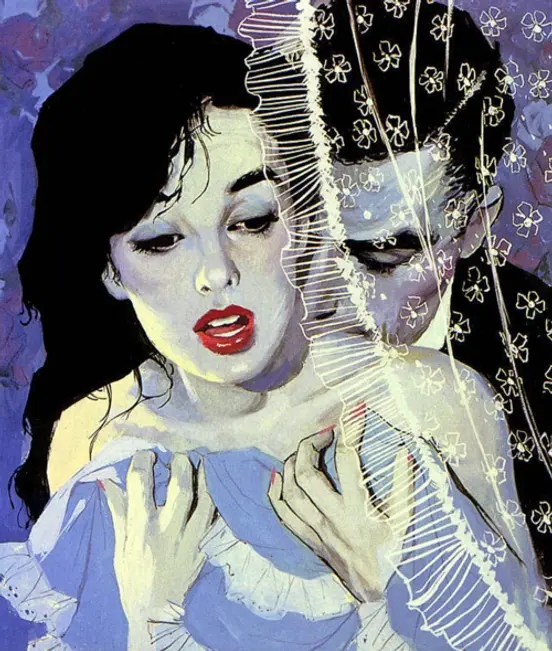
Ernest Chiriaka
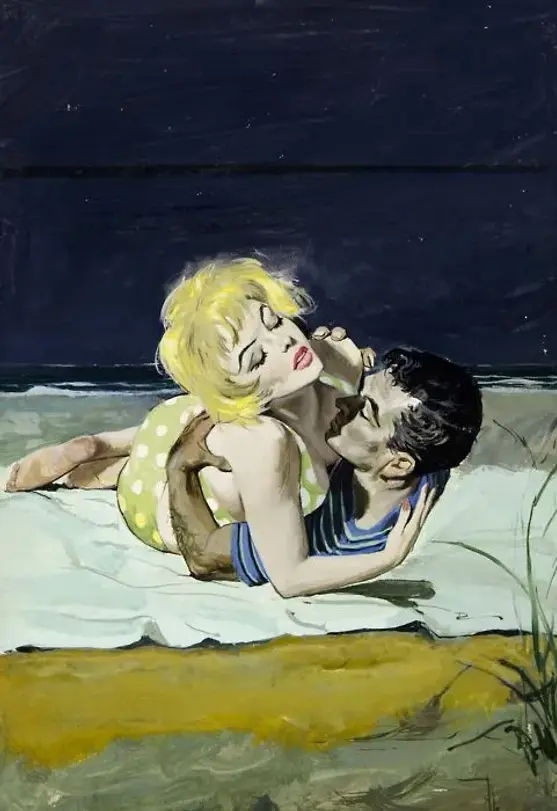
Ernest Chiriaka

Ernest Chiriaka

Ernest Chiriaka

Ernest Chiriaka

Ernest Chiriaka

Ernest Chiriaka

Ernest Chiriaka

Ernest Chiriaka

Ernest Chiriaka

Ernest Chiriaka

Ernest Chiriaka

Ernest Chiriaka

Ernest Chiriaka

Ernest Chiriaka

Ernest Chiriaka

Ernest Chiriaka

Ernest Chiriaka

Ernest Chiriaka

Ernest Chiriaka

Ernest Chiriaka

Ernest Chiriaka

Ernest Chiriaka

Ernest Chiriaka

Ernest Chiriaka

Ernest Chiriaka